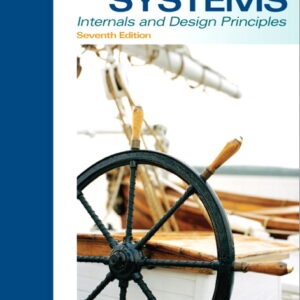Leadership and Nursing Care Management Huber 4th Edition Test Bank
$35.00
Leadership and Nursing Care Management Huber 4th Edition Test Bank
Leadership and Nursing Care Management
Leadership and Nursing Care Management Huber
Leadership and Nursing Care Management Huber 4th
Leadership and Nursing Care Management Huber 4th Test Bank
Leadership and Nursing Care Management Huber 4th Edition Test Bank
*** YOU ARE BUYING the Test Bank ***
Name: Leadership and Nursing Care Management
Author: Huber
Edition: 4th
Type: Test Bank
– there’s a very high chance that you will see a very similar, if not exact the exact, question in the test!
–
–
If you have any questions, please feel free to contact us. Our response is the fastest. All questions will always be answered in 6 hours., most of the time within 30mins
We also faced similar difficulities when we were students, and we understand how you feel.
But now, with the Leadership and Nursing Care Management 4th Test Bank, you will be able to
* Anticipate the type of the questions that will appear in your exam.
* Reduces the hassle and stress of your student life.
* Improve your studying and also get a better grade!
* Get prepared for examination questions.
* Can save you time and help you understand the material.
This is the quality of service we are providing and we hope to be your helper.
Test Bank is accurate.
Prepare to receive your Leadership and Nursing Care Management 4th Test Bank in the next moment.
If you have any questions, or would like a receive a sample chapter before your purchase, please contact us at [email protected]
Leadership and Nursing Care Management
Leadership and Nursing Care Management Huber
Leadership and Nursing Care Management Huber 4th
Leadership and Nursing Care Management Huber 4th Test Bank
Leadership and Nursing Care Management Huber 4th Edition Test Bank
Huber: Leadership and Nursing Care Management, 4th Edition
Chapter 1: Leadership Principles
Test Bank
MULTIPLE CHOICE
1. Leadership is best defined as ____.
a. An interpersonal process of participating by encouraging fellowship
b. Delegation of authority, responsibility, and the coordination of activities
c. Inspiring people to accomplish goals through support and confidence building
d. The integration of resources through planning, organizing, and directing
ANS: C
Leadership is the process of influencing people to accomplish goals by inspiring confidence and support among followers. Answers a, b, and d are aspects of leadership but do not fully define it.
DIF: Level of Cognitive Ability: Knowledge REF: 2, 4
2. A staff registered nurse is leading a multidisciplinary clinical pathway team in the development of care for patients with total knee replacement. Which of the following statements would exemplify leadership behaviors in a clinical pathway team meeting?
a. “Nursing is responsible for pain control of the total knee replacement patient.”
b. “Our pharmacist has provided some excellent pain control literature.”
c. “Physical therapy’s expertise is in rehabilitation, not pain control.”
d. “Total knee replacement patients require optimal pain control.”
ANS: B
Leadership is the process of influencing people to accomplish goals by inspiring confidence and support among followers. Answer b is supportive of a team member’s work and depicts some skill at interpersonal relationships. Answers a, c, and d discourage teamwork and display a lack of confidence in work of the other disciplines.
DIF: Level of Cognitive Ability: Application REF: 3, 4, 5
3. During a staff meeting, a group of registered nurses has complained that medications are not arriving to the unit in a timely manner. The nurse manager suggests that the group resolve this issue through the development and work of a multidisciplinary team led by one of these registered nurses. This scenario demonstrates ___________.
a. Adaptation
b. Empowerment
c. Flexibility
d. Relationship management
ANS: B
Empowerment is the giving of authority, responsibility, and the freedom to act. In this situation, the manager has given authority, responsibility, and the freedom to act in the investigation and resolution of this issue. Adaptation is the ability to adjust behaviors and other resources to match the situation, which is a behavior competency of leadership. Flexibility is the ability to “tolerate ambiguity and have a sense of personal empowerment.” Relationship management is effective communication with others that disarms conflict that can help develop the emotional maturity of team members.
DIF: Level of Cognitive Ability: Application REF: 6
4. The postoperative patient with anterior cervical laminectomy is complaining of tightness in his throat. His voice is raspy. The staff nurse asks the unit secretary to “Page Dr. Julio stat.” This is an example of ____.
a. Authoritarian leadership
b. Democratic leadership
c. Laissez-faire leadership
d. Servant leadership
ANS: A
Authoritarian leadership uses directive and controlling behaviors in which the leader determines policies and makes decisions in isolation. The leader orders subordinates to carry out the tasks or work. This style is helpful in crisis situations. Democratic leadership is a team approach in which the leader shares responsibility for decision making and quality improvement. Laissez-faire leadership does not interfere with decision making or policy setting. Servant leadership is a method used to facilitate the work of others by serving subordinates through nurturing autonomy and personal growth.
DIF: Level of Cognitive Ability: Application REF: 12
5. A quality improvement team is working to enhance teamwork among the staff in a newly developed Alzheimer’s program. Which of the following statements would be an expected behavior that illustrates quantum leadership?
a. “After the meeting today, each member on this team will be a role model of good communication techniques to other staff members.”
b. “How would you describe an ideal collaborative practice environment?”
c. “What do you think about sharing our opinions today in a mutually respectful manner as we move around the table?”
d. “You folks are highly motivated and smart enough to develop a plan on your own. I’ll support you as needed.”
ANS: B
Quantum leadership fosters an environment of curiosity, questioning, and exploration. Answer a depicts an authoritarian leadership style. Answer c is an example of a democratic leadership style. Answer d is an example of laissez-faire leadership.
DIF: Level of Cognitive Ability: Application REF: 20
6. A nursing executive is leading a multidisciplinary team of professionals who have worked well together on prior initiatives. Which of the following leadership styles might work best in this situation?
a. Authoritarian
b. Democratic
c. Transformational
d. Transactional
ANS: B
Democratic leadership would work best in this situation. Authoritarian leadership is ineffective with professionals. Transformational leaders motivate others over time and influence changes in perception while providing a sense of direction. Transactional leaders focus on day-daily operations and assume a caretaker role. This also is not effective in this type of situation.
DIF: Level of Cognitive Ability: Application REF: 12
MULTIPLE RESPONSE
1. Which of the following behavioral aspects are present in the feminist perspective leadership style?
a. Builds relationships
b. Focuses on completing tasks and achieving goals
c. Empowers others
d. Fosters an environment of mothering
e. Supports bargaining of tasks and roles
f. Promotes personal growth
ANS: A, C, F
Leaders using the feminist perspective build connections, empower others, and support personal growth to promote teamwork and to accomplish goals. B, d, and e are not behavioral aspects of feminist perspectives on leadership.
DIF: Level of Cognitive Ability: Comprehension REF: 21
2. A nurse manager at Great Lakes Hospital is meeting with the dean of a well-recognized university who is the keynote speaker today at the nursing conference. He remembers that one of the registered nurses is interested in attending a well-known university to obtain a doctorate. The nurse manager arranges for the registered nurse to meet with this dean. The nurse manager is exhibiting leadership behaviors consistent with __________.
a. Feminist perspective
b. Servant leadership
c. Transactional leadership
d. Transformational leadership
ANS: A, B, D
This behavior nurtures personal growth (servant leadership) and assists the registered nurse to attain his or her fullest potential (transformational leadership). This behavior also helps the registered nurse build a connection with the dean, a representative of the university (feminist perspective).
DIF: Level of Cognitive Ability: Application REF: 18, 20, 21
3. A nurse manager at Morgan Hill Community Hospital is known to be an excellent nursing manager by the personnel working on her nursing unit. The nurse manager exhibits which of the following behaviors?
a. Knows the personnel and addresses them by name
b. Intervenes when she receives complaints
c. Has a consistent style that never varies
d. Is visible on the nursing unit by all shifts on a frequent basis
e. Evaluates a number of aspects of problems prior to making decisions
f. Uses decision by consensus to resolve conflicts
g. Fosters collaboration
ANS: A, D, E
These behaviors foster teamwork and positive morale. Answer b does not portray a manager that trusts her employees to handle complaints themselves nor does it exemplify that the manager examines all aspects of a problem prior to reacting to it. Answer c is incorrect because an effective manager must be flexible and vary her or his style to meet the needs of the situation. Answer f is incorrect because decision by consensus is not realistic nor acceptable in many situations.
DIF: Level of Cognitive Ability: Application REF: 2, 3, 7
4. To reach magnet status the nursing service in a hospital must attain competency in the following areas.
a. Professionalism
b. Use of critical thinking skills
c. Business skills and principles
d. Leadership
e. Communication and relationship management
f. Knowledge of the health care environment
g. Implement an acuity-based staffing system
ANS: A, C, D, E, F
MagnetTM hospitals are recognized for the nurse’s critical role in the business of health care. Professionalism, leadership, communication and the ability to work with others as well as understanding the business and principles of running a hospital business and health care environment are required. No specific staffing systems are required. Although nurses are required to use critical thinking skills on a daily basis, this is not one of the areas for which competency is measured or required.
DIF: Level of Cognitive Ability: Application REF: 1












Reviews
There are no reviews yet.